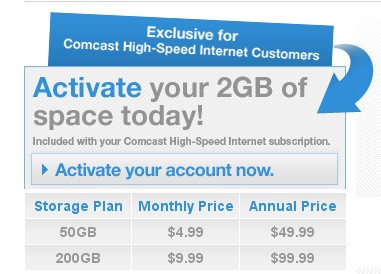 AT&T Mobility has been sending out their blogger team to try and clean up the damage from CEO Ralph de la Vega’s not-too-subtle hint that the days of unlimited iPhone data plans are numbered:
AT&T Mobility has been sending out their blogger team to try and clean up the damage from CEO Ralph de la Vega’s not-too-subtle hint that the days of unlimited iPhone data plans are numbered:
Unfortunately, there has been a lot of misinformation, rumor and pure speculation floating out there during the last day on this topic.
[…]
We carry more smartphone data traffic than any other U.S. provider, with traffic growing 5,000 percent over the past three years. As a result, we are working aggressively and investing heavily in our network to support this tremendous growth. Our $17 – $18 billion CapEx spend for 2009 includes:
- Nearly doubling the wireless spectrum serving 3G customers in hundreds of markets across the country, using high-quality 850 MHz spectrum. This additional spectrum expands overall network capacity and improves in-building reception.
- Adding about 2,000 new cell sites, expanding service to new cities and improving coverage in other areas.
- Adding about 100,000 new backhaul connections, which add critical capacity between cell sites and the global IP backbone network. We’re doubling the number of fiber-served cell sites this year.
- Enabling widespread access to our Wi-Fi network – the largest in the country with more than 20,000 hotspots in all 50 states – allowing them to take advantage of the best available AT&T mobile broadband connection.
- Rolling out even faster 3G speeds with deployment of HSPA 7.2 technology, with availability in six markets planned by the end of the year.
- Preparing for field trials of next generation, LTE wireless networks next year, with deployment planning to begin in 2011. This schedule aligns with industry expectations for when a wide variety of compatible 4G wireless devices should be available.
We have seen very positive results from our efforts thus far. In one of the most common measures of reliability – dropped calls – AT&T’s national performance is within two-tenths of 1 percent of the highest score among major providers as measured by an independent firm, with only 1.32 percent of calls dropped nationally.
AT&T’s blogger team says it isn’t true that de la Vega is definitively saying he’s “capping” services.
But de la Vega never said in his original statements that he was advocating “capping” service. He said, “there’s got to be some sort of a pricing scheme that addresses … usage.” Scheme is right. That’s code language for consumption or usage-based billing, something the blogger team doesn’t rule out. A strict usage cap simply says a customer cannot exceed a specified amount. Most consumption billing schemes monetize data consumption, not with a true pay-for-use system that bills by the megabyte, but rather a fixed monthly price with an allowance and overlimit penalties for exceeding it. AT&T already uses consumption-based billing for its prepaid and postpaid mobile broadband plans, so extending it to the iPhone isn’t exactly novel.
The iPhone customer has been treated as a profit engine by AT&T since the phone was first introduced. Compelling customers to purchase a mandatory data plan that was originally priced at $20 and was raised to $30 was the price iPhone customers had to pay for bragging rights. Should AT&T impose consumption billing, that price may go much higher.
AT&T must believe iPhone users are willing to pay that price or dramatically cut usage. Either way, AT&T milks the very last nickle out of its exclusivity arrangement that some industry observers believe will expire in the early summer of 2010. When that happens, AT&T must be quietly pondering what customers will do once they can buy an iPhone from other carriers.
Leafing through January’s issue of Consumer Reports, I find one possible answer in the magazine’s annual survey of America’s best and worst cell phone providers (subscription required for detailed results). More than 50,000 subscribers rated their wireless carrier, and AT&T turned in dismal ratings, usually ending up at the bottom except in some cities where Sprint achieved that dubious honor. AT&T’s problems, reported in cities from coast to coast:
- No service where service should exist
- All circuits busy
- Dropped calls
- Static
Results have been so poor, the magazine recommended that those affected should call AT&T and demand credit. Many customers have gotten at least three months’ worth of service credits valued at more than $200 for doing so.
Logical conclusion: customers love the iPhone but hate the network it is tied to. With de la Vega’s recent data usage temper tantrum, it’s just one more reason to be annoyed with AT&T.
For customers who entertain the notion of owning an iPhone, but simply refuse to leave their current provider to obtain it, that’s nearly $3,000 left on the table over the life of a two-year contract. That should concern both Apple and AT&T. For Apple, it means potentially losing new iPhone customers to impr0ved competing phones, such as those running Google’s Android operating system. For AT&T, once the Berlin Wall of exclusivity falls and two year contracts expire, years of consumer frustration with their network could lead to a stampede for the exits.


 Subscribe
Subscribe




